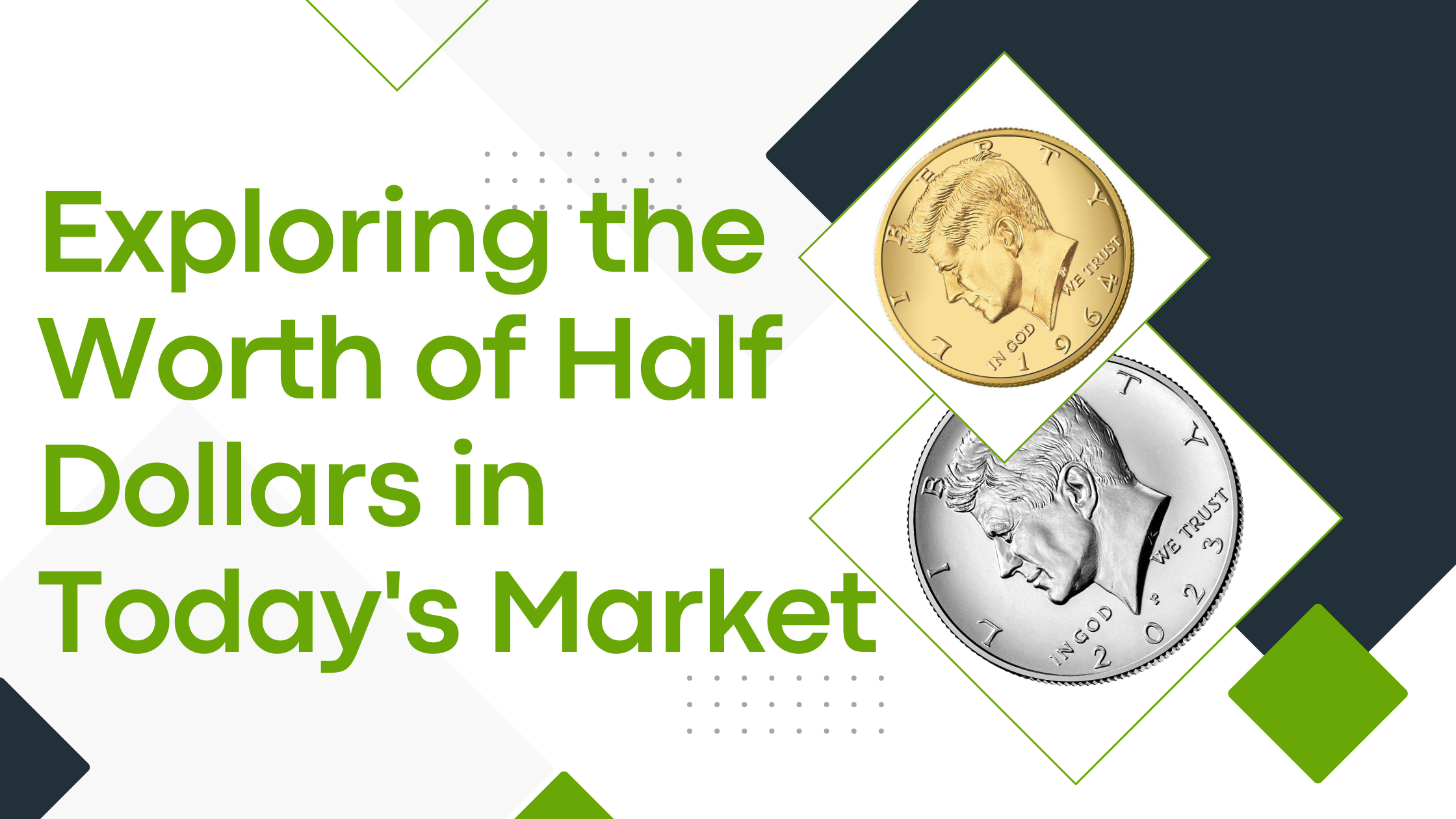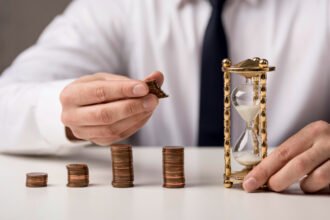Exploring the Worth of Half Dollars in Today’s Market
- 1 Let’s Navigate The Value of Half Dollars in Today’s Market
- 1.1 Numismatic Rarity: Unveiling the Most Valuable Half Dollars
- 1.2 Historical Significance: How Past Events Impact Half-Dollar Values
- 1.3 Minting Matters: The Influence of Mint Marks on Half-Dollar Prices
- 1.4 Collectors’ Favorites: Identifying the Most Sought-After Half-Dollar Designs
- 1.5 Market Trends: Understanding Fluctuations in Half-Dollar Values
In a world where currency and collectibles intertwine, half dollars stand as fascinating artifacts with both historical significance and potential monetary value. This exploration delves into the current market dynamics surrounding these distinctive coins, shedding light on the factors that contribute to their worth. From rare minting years to the evolving landscape of numismatics, understanding the value of half dollars requires a journey through the annals of coinage history. Join us as we navigate this realm, unraveling the stories and market forces that define the worth of half dollars in today’s economic tapestry.
Let’s Navigate The Value of Half Dollars in Today’s Market
As we navigate the annals of coinage history, the worth of Kennedy Half Dollars emerges as a captivating chapter, reflecting not only their historical context but also the specific attributes that contribute to their enduring appeal in today’s dynamic economic tapestry.
Numismatic Rarity: Unveiling the Most Valuable Half Dollars
Embark on a journey into the captivating realm of numismatic rarity as we unveil the most valuable half-dollars. Beyond their face value, certain coins stand out for their scarcity, historical significance, and unique attributes. Explore the fascinating stories behind these prized specimens, ranging from limited mintages to distinctive errors that elevate their desirability. Numismatic rarity, a nuanced interplay of historical context and coin-specific characteristics contributes to the allure of these half dollars, making them coveted treasures for collectors and enthusiasts alike. Join us in unraveling the mysteries that surround these exceptional coins, each holding a piece of history within its gleaming alloy.
Historical Significance: How Past Events Impact Half-Dollar Values
Delve into the profound connections between historical events and the intrinsic value of half dollars. Each coin is a tangible artifact, embodying moments that have shaped nations and cultures. Whether commemorating milestones, political figures, or pivotal periods, the historical narrative woven into these coins enhances their allure for collectors and investors. Discover the transformative power of a well-crafted design or a commemorative issue, as we explore how the echoes of the past resonate in the present value of half dollars. Unearth the rich tapestry of history encapsulated within these coins, where each piece becomes a tangible bridge between bygone eras and contemporary numismatic appreciation.
Here are some examples of how past events can influence the value of half-dollars:
- Mintage Figures: The number of coins minted plays a crucial role in determining rarity. If a particular half-dollar coin has a low mintage due to historical events such as economic downturns, wars, or changes in minting policies, it is likely to be more valuable.
- Numismatic Trends: Historical trends in numismatics, or the study and collection of coins, can affect values. For example, if there is a growing interest in collecting coins from a specific era or design, the demand for those coins may increase, leading to higher values.
- Silver Content: Half-dollars minted before 1971 in the United States typically contained a significant amount of silver. Changes in the price of silver on the commodities market can impact the intrinsic value of these coins. During periods of high silver prices, the melt value of silver coins increases, influencing their market value.
- Historical Events Depicted on Coins: Some half-dollars feature designs that commemorate significant historical events or figures. For example, commemorative half-dollars issued to mark important anniversaries or events may gain value based on the historical significance they represent.
- Collector Interest: Events that generate increased interest in coin collecting can also impact values. For instance, if a particular historical event or anniversary prompts more people to start collecting coins, the demand for specific half-dollars may rise, affecting their market values.
- Condition and Grading: The preservation of a coin over time is crucial. Well-preserved coins in high grades are generally more valuable. Historical events can affect the condition of coins in circulation, and those that survive in excellent condition may command higher prices.
- Market Dynamics: The overall state of the coin collecting market, including supply and demand dynamics, can influence values. Economic conditions, changes in collecting trends, and the emergence of new collectors can all contribute to shifts in the market value of coins.
Minting Matters: The Influence of Mint Marks on Half-Dollar Prices
Unlock the secrets behind half-dollar values by delving into the significance of mint marks. These subtle imprints carry profound influence, signaling the coin’s origin and impacting its rarity. A small, unassuming mark can transform a common coin into a numismatic gem. Explore how the placement and absence of mint marks create a hierarchy among half dollars, influencing the collector’s pursuit and investor’s discernment. Understanding the nuanced language of minting adds a layer of intrigue to these coins, as mint marks become silent narrators of their journey from production to becoming prized possessions, guiding enthusiasts through the labyrinth of numismatic appreciation.
The influence of mint marks on half-dollar prices is due to several factors:
- Scarcity and Rarity: The rarity of a particular mint mark can greatly impact its value. If a specific mint produced fewer coins in a particular year or for a particular series, those coins are likely to be more scarce and, consequently, more valuable to collectors.
- Historical Significance: Certain mint marks may be associated with historical events or periods. For example, coins minted during wartime or economic crises might bear mint marks that signify production challenges or changes in the minting process. Collectors often seek coins with such historical significance, impacting their value.
- Collector Preferences: Some collectors focus on assembling sets of coins from specific mints or mint marks. This specialized collecting approach can create higher demand for coins with certain mint marks, leading to increased prices for those particular pieces.
- Errors and Varieties: Mint marks are sometimes subject to errors or variations, which can make certain coins more valuable to collectors. For example, a mint mark placed in the wrong location or featuring a different style could become a sought-after variety.
- Changes in Minting Facilities: Over the years, the United States Mint has operated several facilities, each identified by a unique mint mark. Coins from certain mints, especially those that are no longer in operation, may carry historical and numismatic significance, affecting their value.
- Design Changes: Mint marks can be affected by changes in coin designs. If a series undergoes a design modification or a shift in minting location, coins with the older or newer mint marks may become more desirable to collectors.
- Grading and Condition: The presence and condition of the mint mark can impact the overall grade of a coin. Coins with well-preserved and clearly visible mint marks are often more desirable to collectors and may command higher prices.
Collectors’ Favorites: Identifying the Most Sought-After Half-Dollar Designs
Explore the aesthetic allure of half dollar by identifying the designs that captivate collectors’ hearts. From classic portrayals of historical figures to innovative artistic expressions, discover which designs have become timeless favorites, influencing the demand and value of these coins.
Market Trends: Understanding Fluctuations in Half-Dollar Values
Navigate the dynamic landscape of the coin market as we analyze trends impacting half-dollar values. From economic shifts to emerging collector interests, gain insights into the factors that drive fluctuations in prices, providing a comprehensive understanding of the ever-changing worth of half dollars.
Here are some key considerations:
- Supply and Demand: Like any commodity, the value of half-dollar coins is influenced by the basic economic principle of supply and demand. If a particular half-dollar is in high demand among collectors and there is a limited supply, its value is likely to increase. Conversely, if the supply is abundant and demand is low, values may decrease.
- Collector Trends: Numismatic trends and preferences among collectors can have a significant impact on market values. For example, if there’s a growing interest in collecting coins from a specific era, design, or mint, the demand for those coins may rise, leading to higher prices.
- Economic Conditions: Economic factors, including inflation and changes in the overall economy, can influence the value of coins. During times of economic uncertainty, some investors may turn to tangible assets like precious metal coins, potentially affecting the values of silver half-dollars.
- Metal Prices: For half-dollars minted before 1971, which often contain a significant amount of silver, fluctuations in the price of silver on the commodities market can impact the intrinsic value of these coins. Investors and collectors often track metal prices as they can influence the overall value of the coins.
- Historical Events: Significant historical events, both globally and locally, can influence half-dollar values. Coins associated with historical milestones or periods may become more desirable to collectors, leading to increased demand and higher values.
- Grading and Condition: The condition of a coin, as determined by professional grading services, plays a crucial role in its value. Coins in better condition generally command higher prices. Changes in the availability of coins in certain grades can influence market trends.
- Mintage Figures: The number of coins minted in a particular year and at a specific mint can impact rarity and, consequently, value. Low mintage numbers often make coins more desirable to collectors.
- Market Perception: Public perception and sentiment regarding the overall coin market and specific series can influence values. Positive publicity, such as the discovery of a rare coin or a popular coin in the news, can boost interest and prices.
- Cultural and Popularity Factors: Coins that hold cultural or historical significance, or those featured in popular media, may experience increased demand, affecting their values.

















